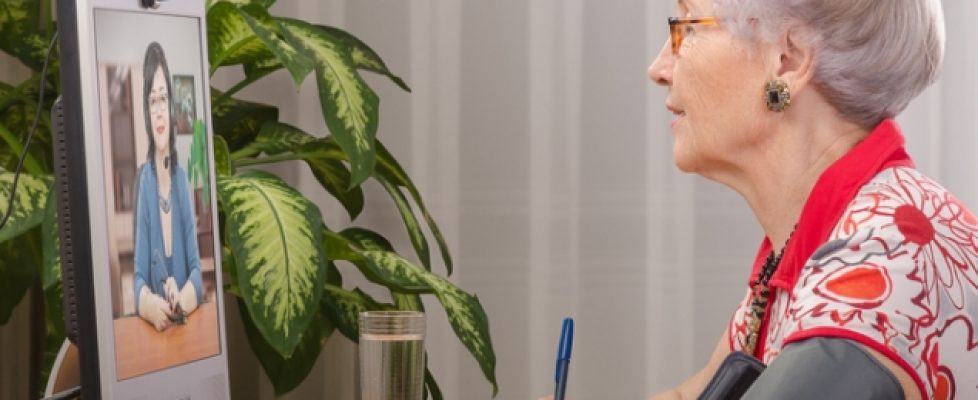Hospices Seek to Balance Technology with the Human Touch
By Holly Vossel | October 4, 2020
Hospices nationwide have leveraged technological advances to improve workflows, referral communications and enhance patient care. While telehealth in particular has been vital for hospices to continue reaching vulnerable high-risk patient populations during the COVID-19 pandemic, providers must proceed with caution when it comes to technology and patient care.
Prior to the pandemic, technology in the hospice industry was evolving, with systems such as predictive analytics, telemedicine, artificial intelligence and virtual reality gradually changing the end-of-life care landscape.
“We have obviously seen an increase in the use of telehealth, and the word of caution there is we want to make sure we learn from this pandemic and accelerate some of that move,” said Edo Banach, president and CEO of National Hospice and Palliative Care Organization (NHPCO) in a recent Netsmart webinar. “We have to make sure that we use technology appropriately, but not to replace the human touch that is the sweet spot of hospice and palliative care organizations.”
NHPCO has been among the advocates in the hospice and palliative spaces calling for regulatory reform as telehealth pushes forward during the coronavirus pandemic. In August the U.S. Centers for Medicare & Medicaid Services (CMS) announced that it would make permanent a number of the temporary flexibilities to expand telehealth that the agency implemented in response to the pandemic, though of rules extended that will affect hospices remains uncertain. Concerns have flooded both the hospice and palliative care fields as providers strain to navigate uncertain technological reimbursement opportunities ahead.
“Importantly, we have to make sure that hospices and palliative care programs are compensated for the technology,” Banach said. “They are nowhere near as compensated as hospitals and other institutions when it comes to technology. That’s something that needs to improve. It’s really going to be important for individuals to have access to the technology that they need to get care in the home and for the clinicians to similarly have that same access and support. This is going to include technology for the delivery of meals and for the delivery of pharmaceuticals, technology that enables vital signs to be taken, technology that allows individuals to stay connected. The investment there is really massive. Billions of dollars of investment have gone into interoperability and state changes.”
Investing deeper in technology comes with considerations of data analysis and relationship-building capabilities as hospices look ahead to a value-based payment environment. Enhancing data analysis will be key for hospices looking to demonstrate their value proposition to Medicare Advantage plans in anticipation of the hospice carve-in coming in 2021. Designed to improve continuity of care and increase coordination among providers, the ability to reach patients sooner through interdisciplinary partnerships is another potential benefit from expanded technology use.
“The most important thing is diversification. If there is an opportunity to provide person-centered interdisciplinary care under contract with different kinds of entities, that’s going to be really important for hospices to establish those relationships to acquire the technology that’s necessary to take risk and really to begin, or to continue to live, in this sort of new value-based world because at some point, it’s going to be all that’s left — for better or worse. It’s really important that if you’re not in that space, to get in that space and to diversify as much as possible. Those who do that will be quite successful,” Banach said.

